
Mini Bernedoodle dogs are one of the most popular doodle breeds in the world today. They only recently skyrocketed to the top of the charts in Europe and the United States although they have been around for a few decades. Their newfound popularity doesn’t come as a surprise given their amazing personalities and incredibly adorable looks.
But as people are beginning to discover this beautiful doodle dog, some traits of the breed that aren't as well-known are beginning to surface as well. Here are a few things you should know before getting a Mini Bernedoodle Dog.
Table of Contents
1. Mini Bernedoodle Dogs Can Get Quite Big
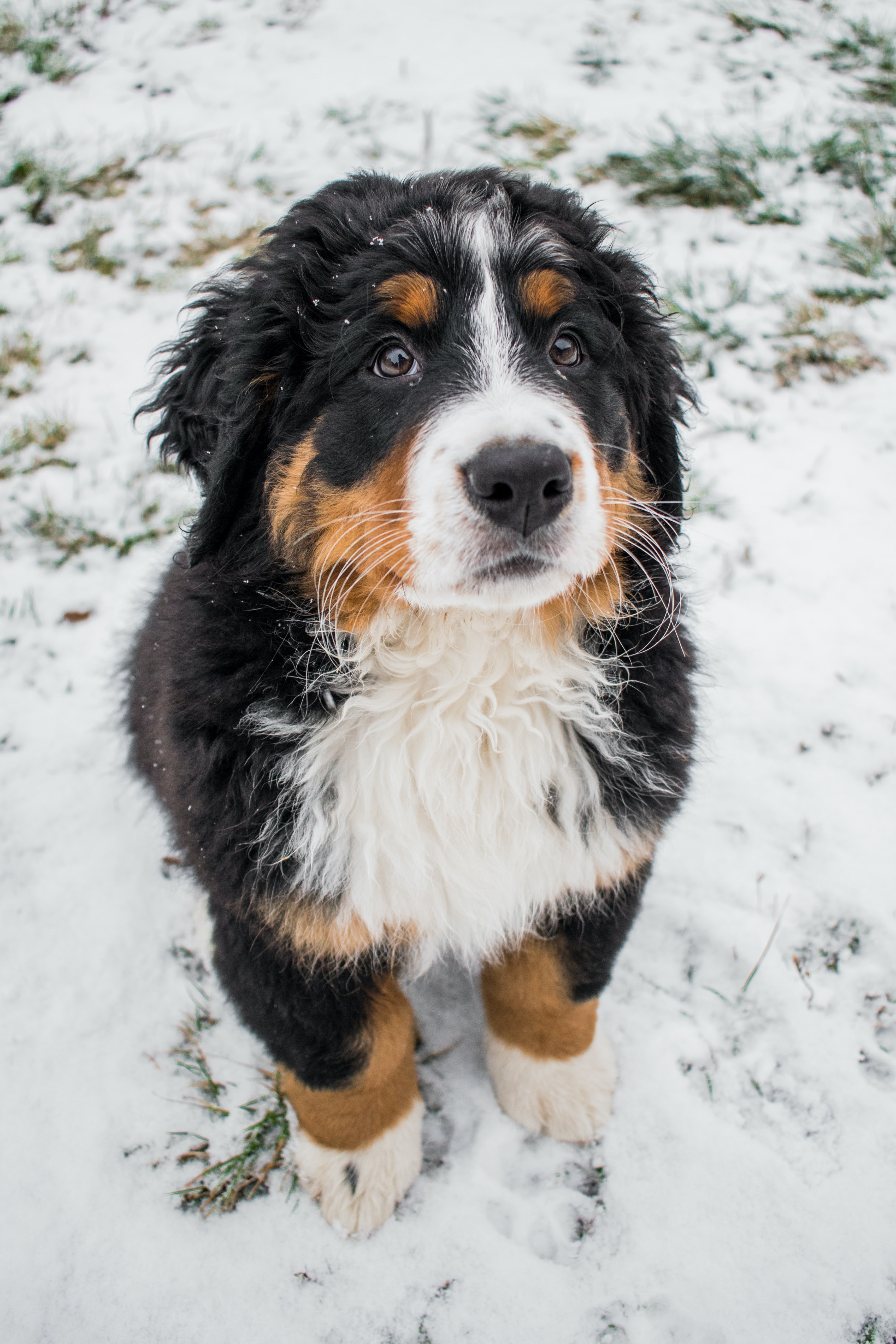
The first and most important aspect to be aware of before getting a Mini Bernedoodle dog is their size variations. Although the MINI in their name stands for Miniature, these dogs aren’t always as small as their name leads you to believe. They are smaller than the Standard Bernedoodle dog, which can weigh up to 90 pounds, and are usually a bit bigger than the average Miniature Poodle.
The average weight for an adult Mini Bernedoodle dog can vary from 20 to 50 pounds, and their height can go from 13 to 22 inches when they reach adulthood.
Estimating their exact size as adults is more difficult in mixed breeds like the Mini Bernedoodle, given that they are a mix between a large dog and a small one. The parents of this breed are miles apart when it comes to size, with the Bernese Mountain Dog reaching as much as 115 pounds and the Miniature Poodle as little as 12 pounds.
At Premier Pups, our size estimates for the Mini Bernedoodle adult dog are based on a number of factors such as the size of the puppy’s parents, the average size and weight of similar Mini Bernedoodles, and their generations.
RELATED: How Big Do Mini Bernedoodles Get?
2. Their Energy Levels Can Vary
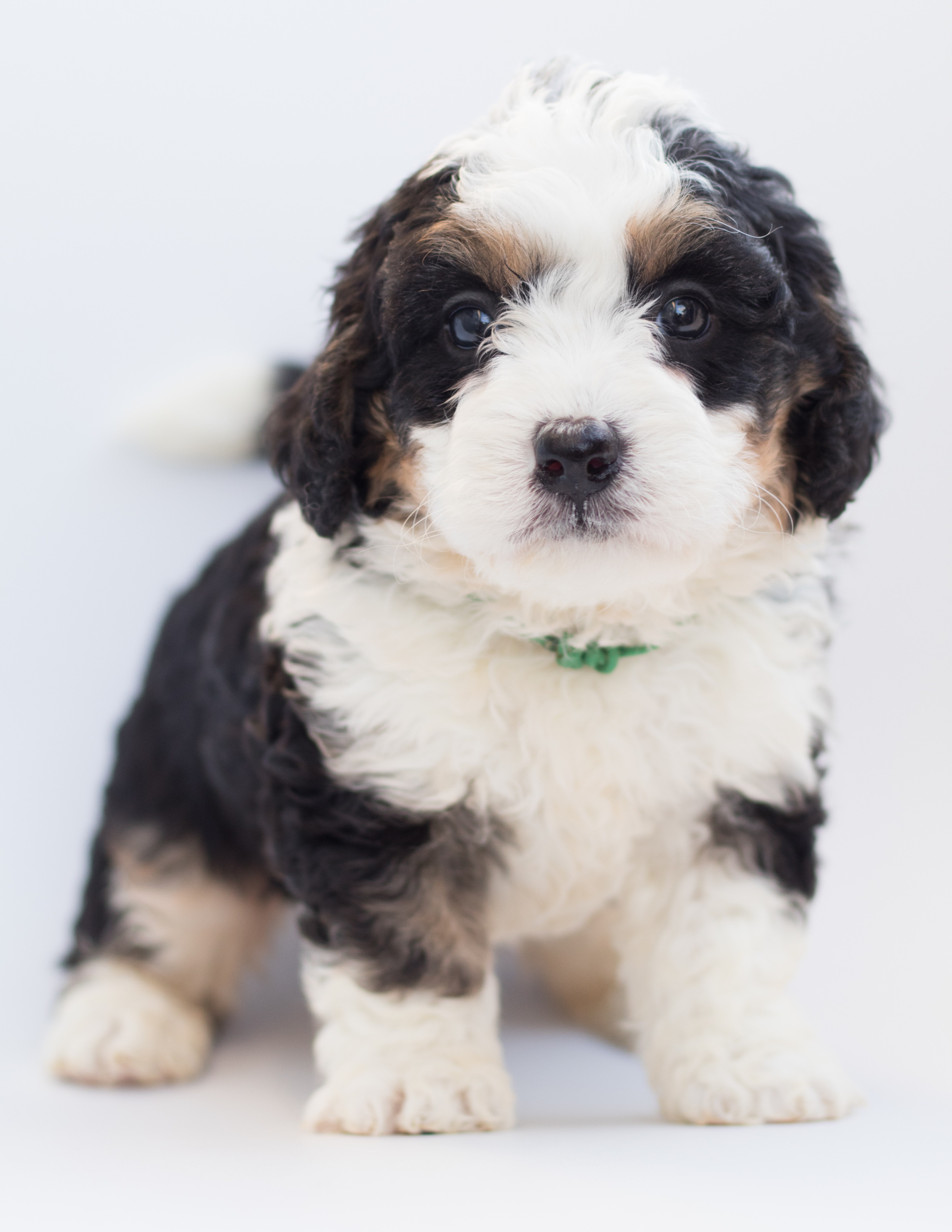
One of the most important things to know before getting a Mini Bernedoodle dog is that they are not always as low-energy as most people think.
The Mini Bernedoodle dog is known worldwide as a low-energy breed. With most Mini Bernedoodle puppies taking after the Bernese Mountain Dog in temperament and energy levels, these dogs are more often than not fluffy couch potatoes when they reach adulthood. 90% of the time, their energy levels will be low-to-moderate, while the other 10% can be quite the energetic fluffballs.
Just like it is with their size, the Mini Bernedoodle dog’s parent breeds are miles apart when it comes to energy levels. The Bernese Mountain Dog is often referred to as the Gentle Giant, while the Miniature Poodle is an energetic little pooch. Mini Bernedoodles can take after either, but they often turn out as relaxed as their Bernese Mountain Dog parent.
RELATED: A Puppy for Your Lifestyle
3. Shedding is a Possibility in the Mini Bernedoodle Dog
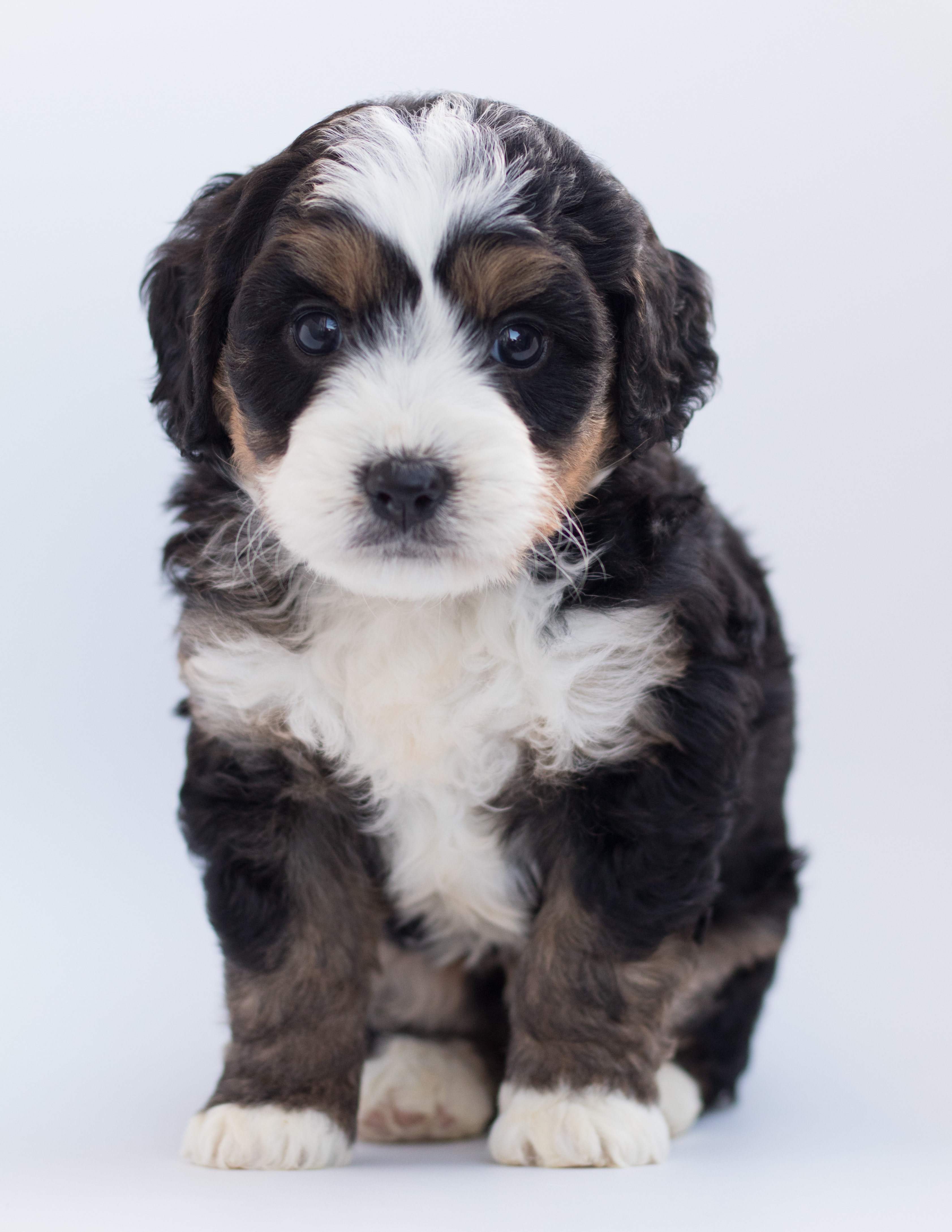
Another factor to consider before getting a Mini Bernedoodle dog is the breed’s shedding levels. The breed's parents, The Bernese Mountain Dog and the Miniature Poodle are opposites when it comes to shedding. The Miniature Poodle’s coat is made of hair and does not typically shed, while the Bernese Mountain Dog’s coat is made of fur and sheds quite a bit all year round.
If you have dog allergies and love this amazing breed, the first thing you will want to do before getting a Mini Bernedoodle dog is to speak with your breeder and ask questions about the puppy’s hypoallergenic qualities. Some puppies in the breed take after their Poodle parent, while others may be seasonal shedders like the Bernese Mountain Dog. Although most meet in the middle and are low-shedding dogs, it’s best to ask before you reserve.
RELATED: Hypoallergenic Puppies
4. Colors and Hair Type of the Mini Bernedoodle Dog
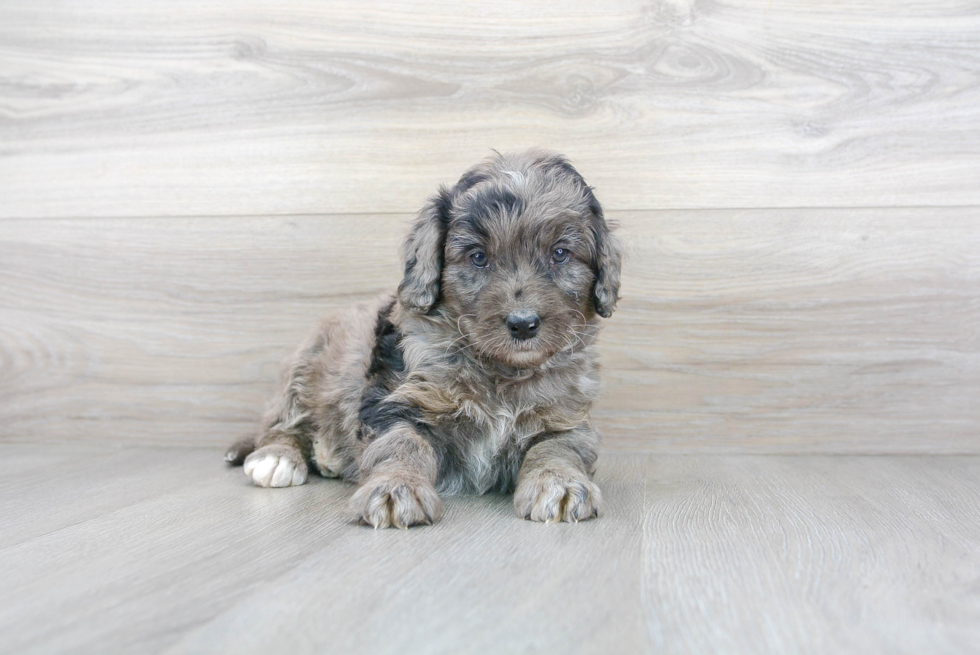
The Mini Bernedoodle dog colors and hair type are other important factors to take into account before reserving one of these gorgeous puppies. Although most puppies in the breed are tricolor with the same patterns and colors that Bernese Mountain Dogs come in, there are quite a few other colors you will find them in. Because they are a poodle mix, Mini Bernedoodle dogs can inherit the vast color pallet of their poodle parent. They can come in color combinations that include white, gray, blue, red, apricot, yellow, brown, cream, chocolate, merle, and black.
The most popular are the ones that have the tricolor patterns of the Bernese Mountain Dog with the popular white, black, and brown coloring.
Their hair type can be straight, wavy, or curly, depending on which of their parents they take after more. Although most usually come with wavy coats, you can also find Mini Bernedoodle dogs with curly hair.
Both their hair type and their coat colors can change as they transition from puppyhood to adulthood. If you have your heart set on a specific color or hair type, the best thing to do is to speak with your breeder and ask about what you can expect.
RELATED: Puppy Color Changes
5. Mini Bernedoodle Dog Generations Have a Big Say in What the Dog Will Be Like
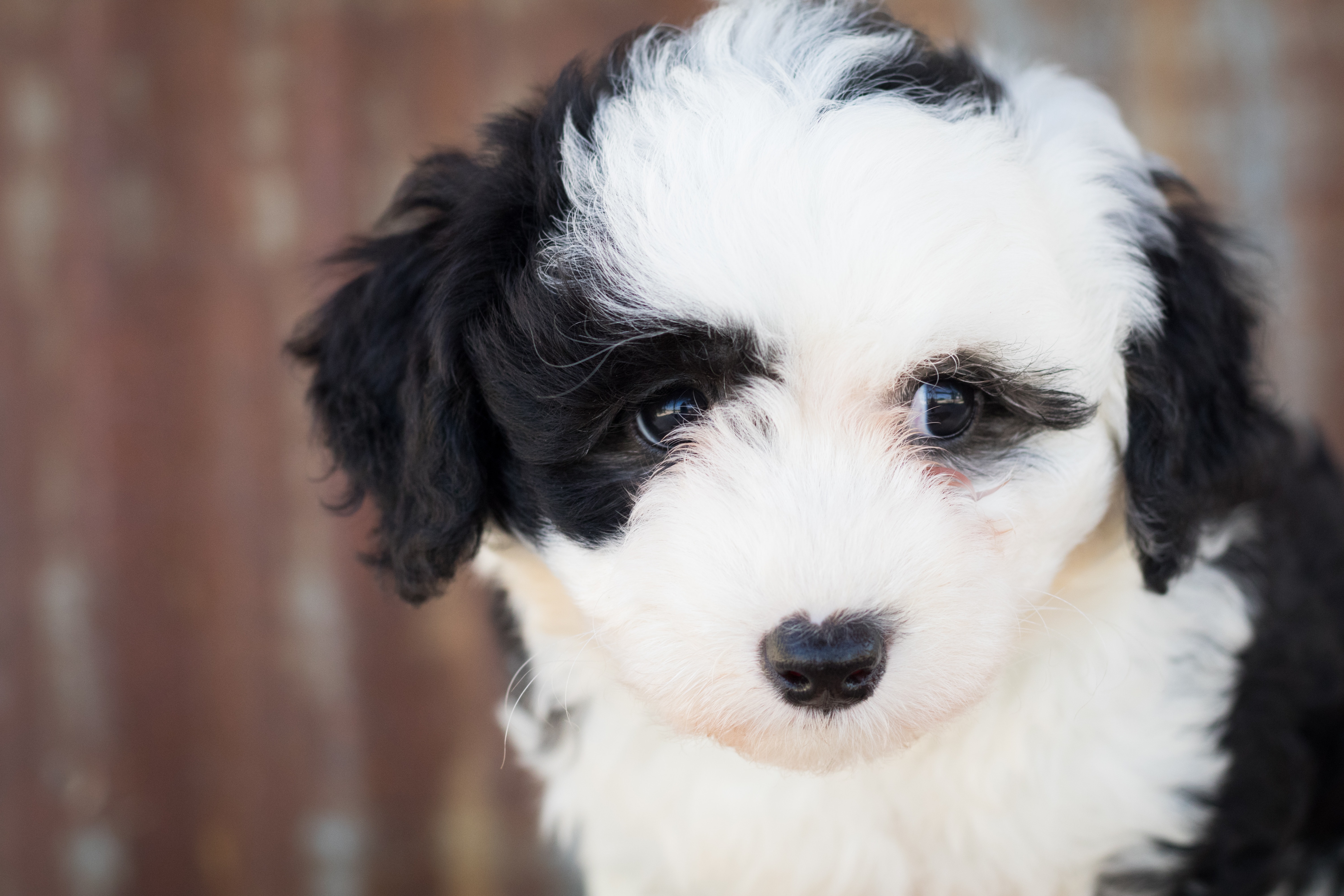
Another important thing you need to know about before you reserve a Mini Bernedoodle puppy is that these dogs are not always a 50-50 cross between a Bernese Mountain Dog and a Miniature Poodle. Like most doodles and designer dogs, the Mini Bernedoodle Dog is bred through more than one generation.
There are a few types of crosses or backcrosses that professional breeders do in order to have more control over aspects such as size, features, and color. The most common and popular ones are F1, F1B, and F2.
The F1 is the most common one out of the three. This is the 50-50 cross between a Bernese Mountain Dog and the Miniature Poodle. The F1 Mini Bernedoodle dog can inherit an equal number of features from both parents, including colors, size, and temperament.
The F1B is a different type of cross, or more specifically a backcross. To get an F1b Mini Bernedoodle dog, breeders cross an F1 Mini Bernedoodle dog with an unrelated Miniature Poodle. Backcrossing with a Miniature Poodle will ensure that the puppy has more of the Poodle’s qualities. The F1b is more hypoallergenic and smaller than the F1. This cross also inherits the Miniature Poodle’s energy levels and temperament.
The F2, although not as common, is a cross that offers the most control over the pup’s size and colors. This is a cross between two F1s. Mixing two F1 Mini Bernedoodle dogs with the same colors and size will likely produce a similar puppy to its parents.
Knowing about these breed generations is important when you plan on getting a Mini Bernedoodle dog, especially if you have your heart set on a specific color or size. Asking your breeder about these generations will give you an idea of what your adult Mini Bernedoodle dog will be like.
RELATED: Mixed Breed Generations Explained
Scroll down to see FAQs about Mini Bernedoodles!
What To Read Next
Doodle Dogs Explained – Part 2
What is the Difference between F1, F1B and F2 Mixed Breed Generations?
Frequently Asked Questions
Are Mini Bernedoodles hypoallergenic? Mini Bernedoodles can be less allergenic than other breeds, but this can vary greatly from dog to dog. Bernedoodles are a cross between a Bernese Mountain Dog and a Poodle, and the Poodle's hypoallergenic coat is one of the traits that can be inherited by Mini Bernedoodles. However, it's important to note that no breed is completely hypoallergenic and individual dogs can still cause allergies in some people.
Are Mini Bernedoodles good dogs? Yes, Mini Bernedoodles can make wonderful pets! These charming dogs are known for their affectionate and loyal personalities, and they often form strong bonds with their owners. Mini Bernedoodles are also highly intelligent and eager to please, which makes them great candidates for training and socialization.
Are Mini Bernedoodles easy to potty train? Mini Bernedoodles can be relatively easy to potty train, but this will depend on the individual dog and the consistency of their training regimen. Like all puppies, Mini Bernedoodles will benefit from a consistent schedule, positive reinforcement techniques, and plenty of patience and praise from their owners.
Do Mini Bernedoodles bark a lot? Some Mini Bernedoodles may bark more frequently than others, depending on their individual personality and the circumstances they find themselves in. However, with proper training and socialization, Mini Bernedoodles can learn to control their barking and only bark when necessary.
Do Mini Bernedoodles like to swim? Many Mini Bernedoodles enjoy swimming and playing in the water. This breed can inherit the love for water from both the Bernese Mountain Dog and the Poodle. Whether your Mini Bernedoodle likes to swim will depend on their individual personality and comfort level in the water. Some Mini Bernedoodles may be natural swimmers, while others may need a little more encouragement and training before they feel confident in the water.




